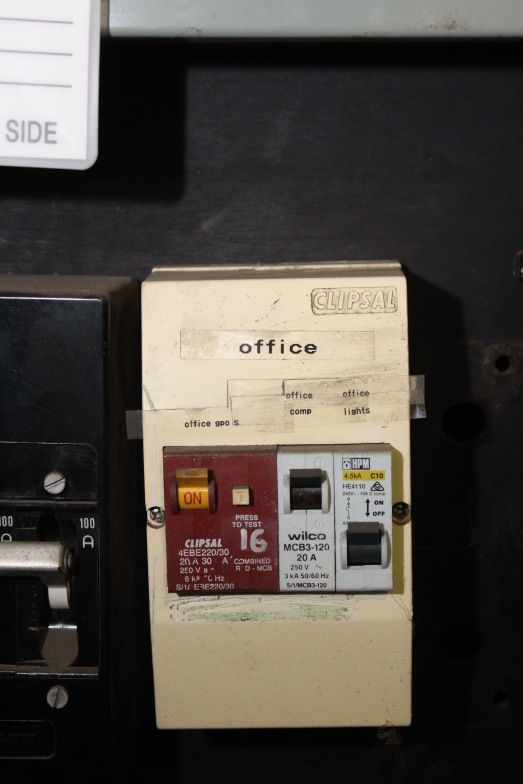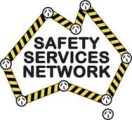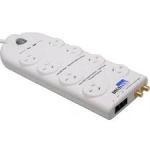Uninterruptable Power Supplies (UPS) Buying Tips
Summers here! … and Summer In Australia means Power Shortages and often leading to Blackouts (no power) or brownouts (low power ie low voltage and current) sometimes these are planned by the Electricity Suppliers to share the extra load during Hot Days… sometimes they occur unplanned because of overloaded or failed equipment either way Your expensive computer or in the case of a business your Server and the data in it could be rendered useless. UPS is the easiest way to protect your hardware and data. For a better and more thorough protection, you need a UPS. It isn’t intended to power you through a blackout though. For that, you would need a generator. Rather, a UPS will let you save your work and power down safely.
A UPS is designed to protect your computer you against such power fluctuations and more importantly, power up your computer even when there is no electricity. Here are a few tips that should help you make a more informed UPS purchasing decision.
Power Outlets
When purchasing a UPS, make sure the power rating is right for your equipment. If you buy one that is rated too low, you might run out of juice before you can power down. Most UPS devices are designed to provide 10 minutes of power. When selecting a UPS, you need to look at the VA rating — or amps multiplied by voltage (240v). The amp rating should be listed on your computer. Add up the VA ratings of everything you will connect to the UPS, then purchase a UPS with a VA rating 20-25% higher. If you are a home PC user, look for a UPS with a 1000-1400 VA rating.
Choose a good length Of Backup time
Don’t expect your UPS to keep your PC running all day. Most UPSes are engineered to provide you a backup time of around 10 to 20 minutes. What they essentially do is save your work when there is a power outage and avoid an abrupt shutdown that could mess up your computer settings. Choose the UPS that meets your backup time demands.
Other features of a UPS
When you are buying a UPS, ask the vendor about more features than just power. This will help you in finding the UPS which has that one additional option that will help you in your buying decision. Of course, the best feature is Automatic Voltage Regulation (AVR) which isolates your PC from voltage fluctuations that lead to computer disturbances. A UPS with AVR conditions the incoming power before being fed to the PC’s Switch Mode Power Supply (SMPS). Most UPSes also automatically initiate a scheduled shutdown sequence when the power is lost, after saving your work, to prevent damage to the computer hardware.
Warranty
Obtain a guarantee before buying a UPS. Undue delays in replacements can affect business. Some vendors offer onsite warranties, where they replace the batteries at your place. If you are planning to use the UPS at work, go for a longer warranty term.
Battery replacement
The general rule is three years. But if you are experiencing low backup times more frequently, you could get the battery replaced immediately if it’s under warranty. If you are facing no problems, expect your battery to work for three years. Its advisable to buy replacement battery cartridges while you are buying the UPS. These cartridges will breathe new life into UPS systems suffering from expired or weak internal batteries.
Power up
Contrary to the myth, its perfectly fine to leave the main switch on even when you are no longer working and the computer is shut down. However, its best to pair your UPS with a voltage stabilizer for additional safety.
Software reporting
The software provided with the UPS is not always accurate with its reports. So don’t listen to it when it says your battery needs to be replaced even though you’ve never experienced low backup times. These faulty reports shouldn’t worry you because they may be trying to get you to purchase the company’s product more frequently (a common problem with print cartridges.) The software is good at its essential function of shutting down the PC properly and saving your work, but you may be the best option to determine whether its time to change the battery.
Tips and tricks
Do not overload the UPS by, for example, connecting external devices like the printer, scanner and the fax machine. NEVER plug a printer into the battery backup system. To optimize the charge of your batteries, you should discharge them completely at least once a month. And lastly, make sure the UPS is properly grounded all the time to prevent any electrical disasters.
Shop around compare specifications against Price..
Standby UPSs are available in the range of 300VA to 500VA for office use, and up to 2KVA to 3KVA for workstations and large servers. Inexpensive standby UPSs ranging in price from $50 to $125 are used by millions of users of personal computers all over the world. Some of them include brands like Belkin, American Power Conversion (APC), Cyber Power, Data Shield, EFI, NCR, SAFE, Pacific Power, Sola and UP Sonic.
Conclusion
Basically , there are two kinds of UPS systems. The Standby Power System (SPS) and Online UPS System. If you are a home user, go for the relatively cheaper SPS. The price of an online UPS is three to five times that of a standby UPS with the same power rating. For servers, buy an online UPS (online means outgoing power is always drawn from the battery). Expect to pay between $150 and $1,000 for an online UPS. The higher the VA rating, the more you’ll pay. You might also want to consider buying one with advanced-battery features. These features include intelligent-battery management, battery-replacement indicator, and hot-swappable user-replaceable batteries.
Remember
An UPS isn’t intended to power you through a blackout.. For that, you would need a generator. However an UPS is a cost effective way to let you save your work and power down safely.
<<<<<<<<<<<<<<<<<<<<<<<<<< 0 >>>>>>>>>>>>>>>>>>>>>>>>>>>
Of course the best way is to ensure that your computer and UPS system is safe and working well is to give us a call.
Tested & True ~ test & tag Adelaide uses the very latest in Portable Appliance Testing…The STC Pro-Logger 2 it can perform static testing class 1,2 & M ,RCD testing, Earth Leakage Detection, 3 phase run testing and logs results as you test. all in one neat piece of equipment. On top this all our Technicians are Trained to National Standard UEENEEP008 in test & tag operations, all our Equipment is in good repair and in Calibration. Most of all we pride ourselves on our Knowledge of OH&S legislation and the current Australian Standards ensuring that you get Quality Service at a competitive price.
Call Now Mobile 040 7605568
Visit us at
http://www.testedandtrue.com.au
or our Facebook Page at https://web.facebook.com/testedtrue
Peter Hill Manager , Tested & True ~ test & tag Adelaide Jan 2018

National Coverage through the Safety Services Network (SA State Member)
|Test and Tag||Lonsdale||Adelaide||South Australia|





